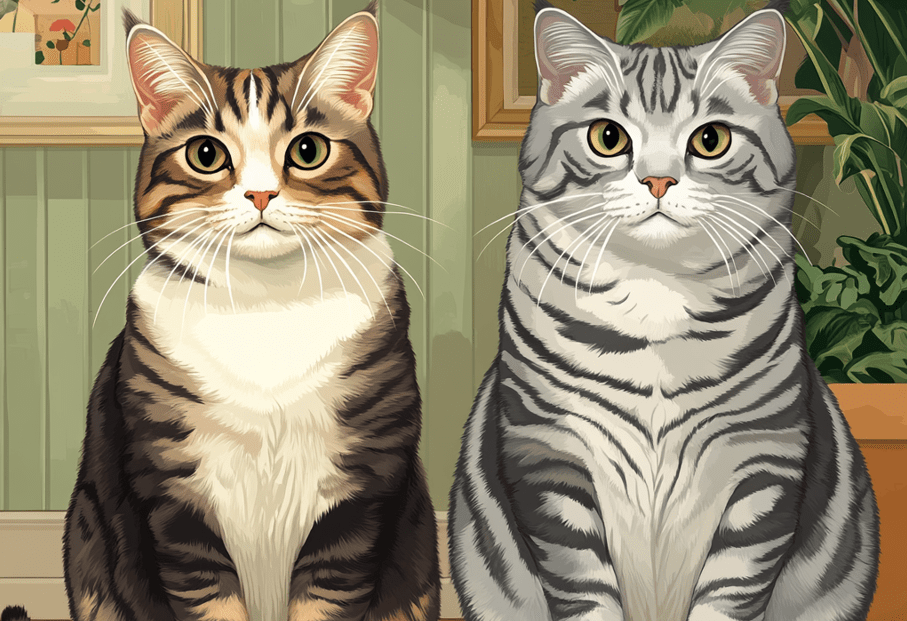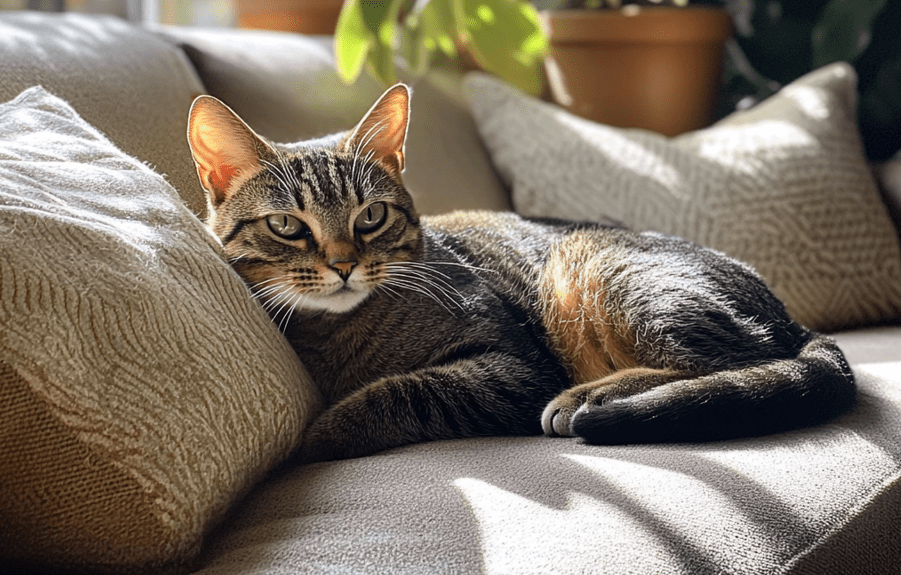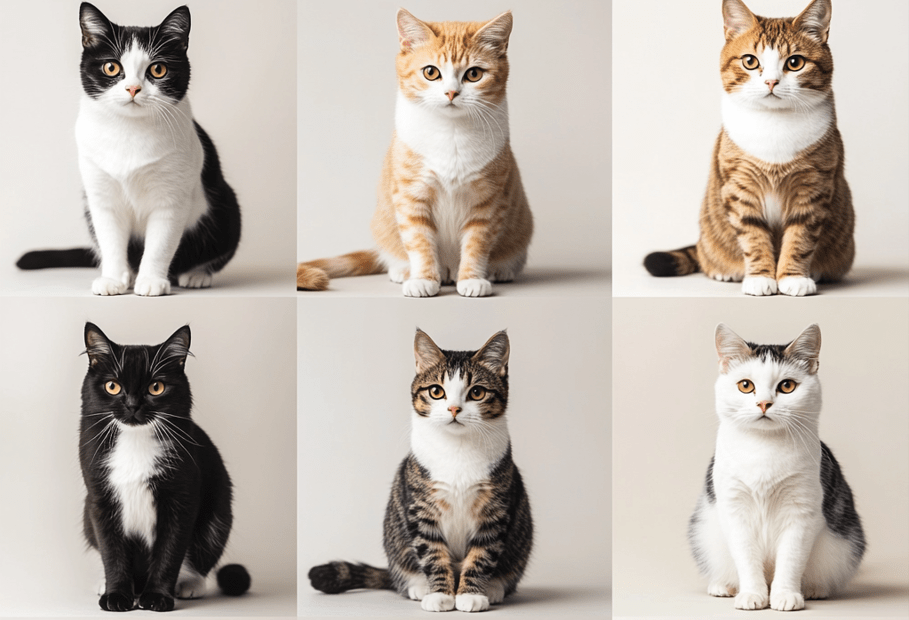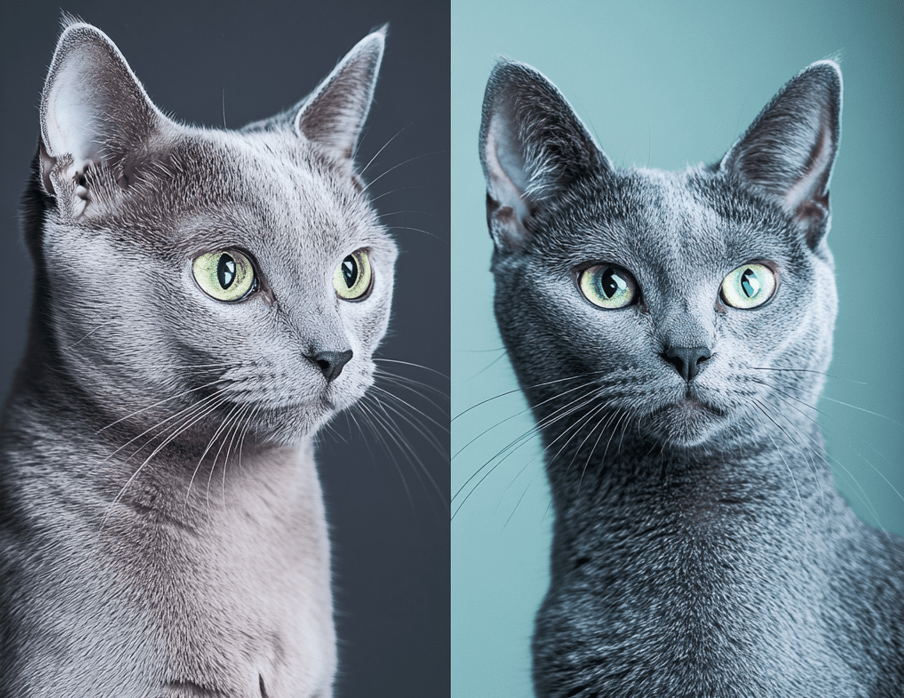
If you’re a proud owner of a Domestic Shorthair cat, you know these charming felines are beloved for their playful personalities and diverse coat patterns. However, maintaining a healthy weight for your Domestic Shorthair is crucial to their well-being. Excess weight can lead to serious health issues like diabetes, arthritis, and heart disease. Helping your Domestic Shorthair lose weight safely requires a thoughtful approach that balances nutrition, exercise, and veterinary guidance. In this comprehensive guide, we’ll explore practical, vet-approved strategies to help your cat shed pounds while keeping them happy and healthy.
Why Weight Management Matters for Domestic Shorthairs
Domestic Shorthair cats are not a specific breed but a category of mixed-breed cats with short, dense coats. Their genetic diversity makes them adaptable and resilient, but it also means their weight can vary widely depending on diet, lifestyle, and environment. Obesity is a growing concern among Domestic Shorthairs, with studies estimating that over 50% of pet cats in the U.S. are overweight or obese.
Carrying extra weight puts your cat at risk for:
Diabetes mellitus: Excess fat can impair insulin function, increasing the risk of this chronic condition.
Joint issues: Extra weight strains joints, leading to arthritis or mobility problems.
Heart and respiratory problems: Obesity can stress the cardiovascular system, reducing your cat’s stamina and quality of life.
Reduced lifespan: Overweight cats are more prone to chronic illnesses that shorten their lives.
By helping your Domestic Shorthair achieve a healthy weight, you’re not only improving their daily comfort but also adding years to their life. Let’s dive into the steps you can take to make this happen safely.
Step 1: Assess Your Cat’s Current Weight and Health
Before starting any weight loss plan, it’s essential to determine if your Domestic Shorthair is truly overweight. Cats are small creatures, so even a pound or two of extra weight can make a big difference.

How to Tell If Your Cat Is Overweight
Body Condition Score (BCS): Veterinarians use a 9-point scale to assess a cat’s weight. A score of 4-5 is ideal, where you can feel the ribs with slight fat cover and see a defined waistline from above. A score of 6 or higher indicates excess weight.
Visual and Touch Checks:
1.From above, your cat should have a noticeable waistline, not a rounded or bulging abdomen.
2.From the side, their belly should tuck upward, not sag.
3.You should feel the ribs without pressing hard, but they shouldn’t be visibly protruding.
Weight History: Compare your cat’s current weight to their weight as a young adult. Most Domestic Shorthairs weigh between 8-12 pounds when healthy, though this varies by individual.
Consult Your Veterinarian
Schedule a vet visit to confirm your cat’s weight status and rule out underlying medical conditions that could contribute to weight gain, such as:
Hypothyroidism: Rare in cats but can slow metabolism.
Cushing’s disease: Causes increased appetite and weight gain.
Fluid retention: Can mimic fat accumulation.
Your vet can also calculate your cat’s ideal weight and recommend a target calorie intake for weight loss. For most cats, a safe weight loss rate is 0.5-2% of their body weight per week. For a 15-pound Domestic Shorthair, that’s about 1-4 ounces weekly.
Step 2: Create a Tailored Nutrition Plan
Diet is the cornerstone of any weight loss program for Domestic Shorthairs. Cats are obligate carnivores, meaning their bodies thrive on high-protein, low-carb diets. Feeding the right food in the right amounts is critical.
Choose a Weight-Loss-Friendly Cat Food
Not all cat foods are created equal. Look for options labeled for “weight management” or “healthy weight” that meet these criteria:
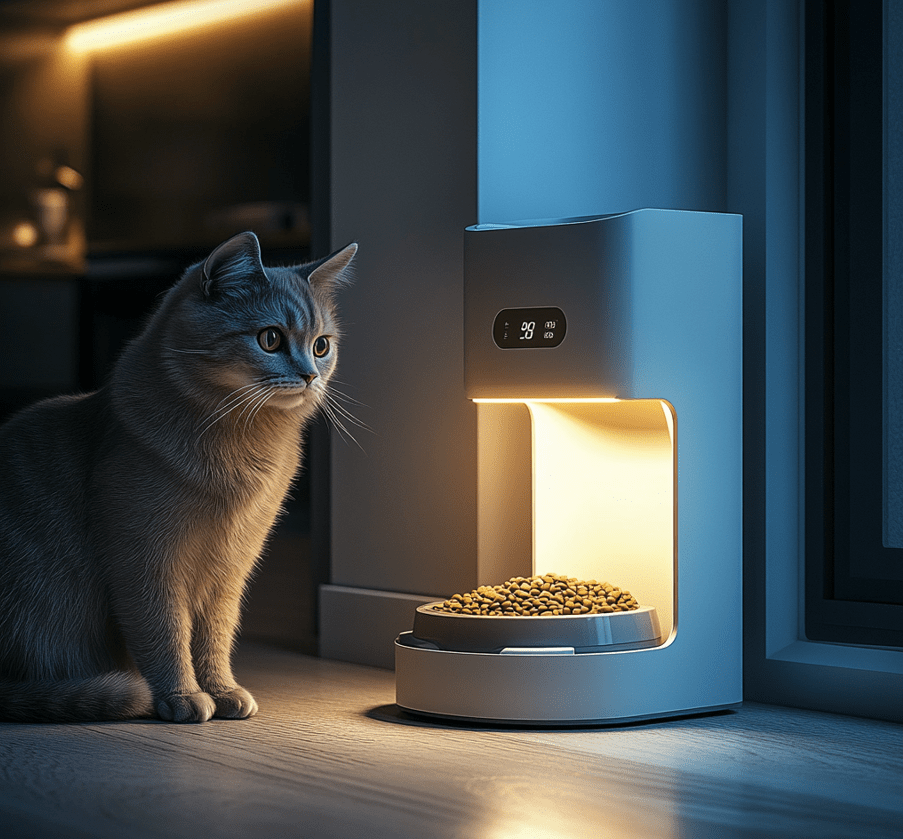
High protein (30-40% or more): Supports muscle maintenance and satiety.
Low carbohydrate (less than 10%): Reduces fat storage and stabilizes blood sugar.
Moderate fat (10-15%): Provides energy without excess calories.
Added fiber: Ingredients like psyllium or cellulose help your cat feel full longer.
Wet food is often better than dry kibble for weight loss because it has higher moisture content, fewer carbs, and lower calorie density. However, some high-quality dry foods formulated for weight control can work if wet food isn’t an option.
Top Food Recommendations:
1.Hill’s Science Diet Perfect Weight
2.Royal Canin Weight Care
3.Purina Pro Plan Weight Management
4.Blue Buffalo Healthy Weight
Always transition to a new food gradually over 7-10 days to avoid digestive upset.
Calculate and Measure Portions
Overfeeding is a common culprit behind feline obesity. To determine how much to feed:
Check calorie needs: Your vet can estimate your cat’s daily calorie requirement based on their ideal weight. For weight loss, aim for 20-25 calories per pound of ideal body weight. For example, a 10-pound cat needs about 200-250 calories daily.
Read food labels: Most cat food packaging lists calories per cup (dry) or per can (wet). Divide your cat’s daily calorie goal by the food’s calorie content to calculate portions.
Use a measuring cup or scale: Eyeballing portions often leads to overfeeding. A digital kitchen scale is the most accurate way to measure dry food.
Feeding Schedule
Instead of free-feeding (leaving food out all day), offer 2-3 small, timed meals daily. This helps regulate your cat’s metabolism and prevents overeating. Use puzzle feeders or slow-feed bowls to make mealtime engaging and slow consumption, mimicking natural hunting behavior.
Limit Treats
Treats are a sneaky source of calories. If you give treats, ensure they make up no more than 10% of your cat’s daily calories. Opt for low-calorie options like freeze-dried meat or single-ingredient treats. Better yet, use non-food rewards like playtime or affection to bond with your Domestic Shorthair.
Step 3: Encourage Exercise and Activity
Domestic Shorthairs are naturally playful, but indoor cats often lead sedentary lives. Increasing physical activity burns calories, builds muscle, and boosts mental health.
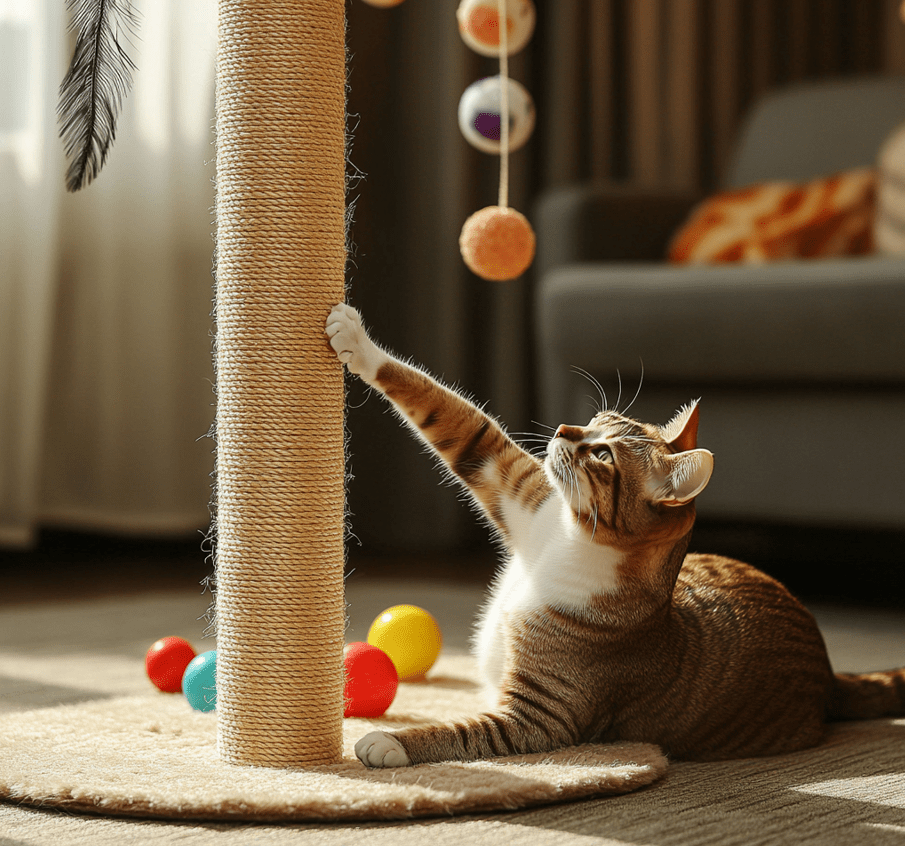
Fun Ways to Get Your Cat Moving
Interactive Toys:
1.Wand toys with feathers or strings mimic prey, triggering your cat’s hunting instincts.
2.Laser pointers encourage chasing (but always let your cat “catch” something tangible to avoid frustration).
3.Battery-operated toys like flopping fish or spinning balls keep cats engaged.
Puzzle Feeders and Food Dispensers:
1.These make your cat “work” for their food, stimulating both body and mind.
2.Examples: Doc & Phoebe’s Cat Hunting Feeder, PetSafe SlimCat Ball.
Vertical Spaces:
1.Install cat trees, shelves, or window perches to encourage climbing and jumping.
2.Domestic Shorthairs love high vantage points to survey their territory.
Daily Play Sessions:
1.Aim for two 10-15 minute play sessions daily.
2.Rotate toys to keep things fresh and exciting.
Make Exercise a Routine
Cats thrive on consistency. Schedule playtime at the same time each day, ideally before meals when your cat is naturally hungry and motivated. If your Domestic Shorthair is reluctant to play, start with short sessions and gradually increase duration as their stamina improves.
Step 4: Monitor Progress and Adjust as Needed
Weight loss is a marathon, not a sprint. Regular monitoring ensures your plan is working and keeps your cat safe.
Weekly Weigh-Ins
Weigh your Domestic Shorthair weekly using a digital pet or baby scale. Record the results to track trends. If your cat isn’t losing weight after 4-6 weeks, consult your vet to adjust calorie intake or investigate other factors.
Watch for Behavioral Changes
Rapid weight loss or changes in appetite, energy, or litter box habits could signal health issues. Contact your vet if you notice:
1.Lethargy or weakness
2.Vomiting or diarrhea
3.Increased thirst or urination
4.Refusal to eat
Celebrate Milestones
As your cat loses weight, celebrate small victories with extra playtime or a new toy. Positive reinforcement keeps you both motivated.
Step 5: Address Environmental and Behavioral Factors
Weight gain in Domestic Shorthairs isn’t always about food or exercise. Stress, boredom, and household dynamics can play a role.
Reduce Stress
Cats often overeat when stressed. Common stressors include:
1.Changes in routine (e.g., moving, new pets, or family members)
2.Lack of mental stimulation
3.Competition for resources in multi-cat homes
Create a calm environment with:
Safe spaces: Provide hiding spots or quiet areas where your cat can retreat.
Enrichment: Offer scratching posts, window perches, or rotating toys to combat boredom.
Pheromone diffusers: Products like Feliway can reduce anxiety.
Multi-Cat Households
If you have multiple cats, one cat’s overeating can sabotage another’s weight loss. Feed cats separately or use microchip-activated feeders to ensure your Domestic Shorthair gets only their portion.
Common Mistakes to Avoid
Helping your Domestic Shorthair lose weight is a commitment, and pitfalls can derail progress. Avoid these errors:
Crash Diets: Cutting calories too drastically can cause hepatic lipidosis, a life-threatening liver condition. Always follow vet guidance.
Human Food: Table scraps are high in fat and sodium, unsuitable for cats.
Ignoring Medical Issues: Weight gain can stem from health problems, not just overeating.
Inconsistency: Skipping play sessions or overfeeding treats undermines your plan.
The Role of Veterinary Support
Your veterinarian is your partner in your Domestic Shorthair’s weight loss journey. Regular check-ups (every 3-6 months during weight loss) ensure your cat’s plan is effective and safe. Your vet may also recommend:
Bloodwork: To monitor organ function and catch issues early.
Prescription diets: For cats with specific health needs.
Supplements: Like L-carnitine to support fat metabolism (only under vet guidance).
Real Domestic Shorthairs Who Slimmed Down
To inspire you, here are two examples of Domestic Shorthairs who successfully lost weight:
Luna, the Tabby:
Starting weight: 18 pounds
Issue: Free-feeding kibble and lack of exercise.
Solution: Switched to wet weight-management food, measured portions, and daily laser pointer sessions.
Result: Lost 6 pounds in 10 months, now an active 12-pound cat with a shiny coat.
Max, the Black-and-White Tuxedo:
Starting weight: 16 pounds
Issue: Stress-eating in a multi-cat home.
Solution: Separate feeding stations, puzzle feeders, and a cat tree for vertical play.
Result: Dropped to 11 pounds in 8 months, with improved mood and agility.
These stories show that with patience and consistency, your Domestic Shorthair can achieve a healthy weight.
Conclusion: A Healthier, Happier Domestic Shorthair

Helping your Domestic Shorthair lose weight safely is one of the greatest gifts you can give them. By combining a vet-approved diet, regular exercise, and a supportive environment, you’ll not only help your cat shed pounds but also enhance their quality of life. Start with a vet visit, create a tailored plan, and stay consistent. Your Domestic Shorthair will thank you with more energy, playfulness, and years of companionship.

